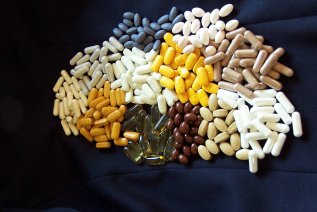|
List of Minerals - Get the Real StoryIt is very difficult to get the whole list of minerals from today’s food sources – even if we eat properly, something that most of us do not do. The list of page links below gives a fairly comprehensive List of Minerals and lots of information on each one. If you don't want to read the introductory information, scroll down and click on the appropriate one to get specific information on each mineral's: •value to your body; •daily dosage; •toxicity. Minerals Essential • Minerals are highly interrelated to each other and to vitamins, hormones and enzymes • Work as co-factors with vitamins helping them play an active role • cobalt essential for vitamin B12 to work • selenium enhances many others Food Sources These are found on a separate page. But it is very difficult to get the whole list of minerals from today’s food sources – even if we eat properly, something that most of us do not do. See the page on our degraded Food Supply for more information. Just Click Here (opens new window). You’ll find there that we need to take vitamins and minerals in supplement form to maintain health and prevent degenerative diseases. Which Minerals Do I Need?
It is very difficult to determine which vitamins and minerals you should take unless you are a trained naturopath or equivalent. If you take Calcium without Magnesium and Vitamin D3, each in the proper ratio, you won't absorb the Calcium properly. Poor choices can do more harm than good. So for most people it is important to choose high quality multivitamin and multi-mineral supplements. WE NEED a complete cascade or symphony of antioxidants, vitamins and minerals to scavenge free radicals, to prevent cell damage and thus forestall degenerative diseases. And they need to be in the proper ratio to one another. If you want to understand free radicals and how antioxidants control them and can't wait until later Click Here Now (opens new window). So don't just run around looking for a chart of minerals or a dictionary of minerals. Read through all the pages linked below to get a better picture. To combat the ever increasing oxidation burden that cannot be avoided in today’s world we need an antioxidant TEAM that includes everything on this listing of minerals, all the established vitamin antioxidants, mineral antioxidants and cofactors, flavanoids and other polyphenol antioxidants along with special antioxidants including melatonin (which decreases dramatically as we age), N-acetyl cysteine, L-glutathione , and alpha-lipoic acid. Types of Minerals Types of minerals can also be an important consideration since some forms of some minerals are more bioavailable (can be better metabolized and absorbed) by your body. How Much do I Need? This is an area of some confusion. At present three different terms are in use and eventually one should become common. The RDA, Recommended Dietary (Daily) Allowance were established initially during WWII, and periodically revised by the Food and Nutrition Board. They tend to the low and conservative side and below the level needed for good health and to prevent today’s degenerative diseases. Initially developed for diseases like scurvy, pellagra and rickets they are woefully out of date. They are being upgraded but this only means that, because of our eating choices and problems with the food supply, an even smaller percentage of our population would meet the RDA levels.
The RDI, Reference Daily Intake, is the value established by the Food and Drug Administration (FDA) in the USA for use in nutrition labelling. It was based initially on the highest 1968 RDA for each nutrient, to assure that needs were met for all age groups. The DRI, Dietary Reference Intakes, are the most recent set of dietary recommendations established by the Food and Nutrition Board of the Institute of Medicine, USA National Academies of Sciences 1997-2001. They will replace previous RDAs, and may be the basis for eventually updating the RDIs. For simplicity, and because it is the best known, the RDA is used for each mineral in this website. Where none is available then the AI or Adequate Intake is used. You will find lots more information in my book It’s About Health. But you can also continue to surf the 200 free pages of this website for lots of valuable information.
It's About Health
List of MineralsBoron Facts
|




 There are lots of lists of minerals. But what you want to know about is the list of minerals that you have in your body and that you might need to supplement.
There are lots of lists of minerals. But what you want to know about is the list of minerals that you have in your body and that you might need to supplement.